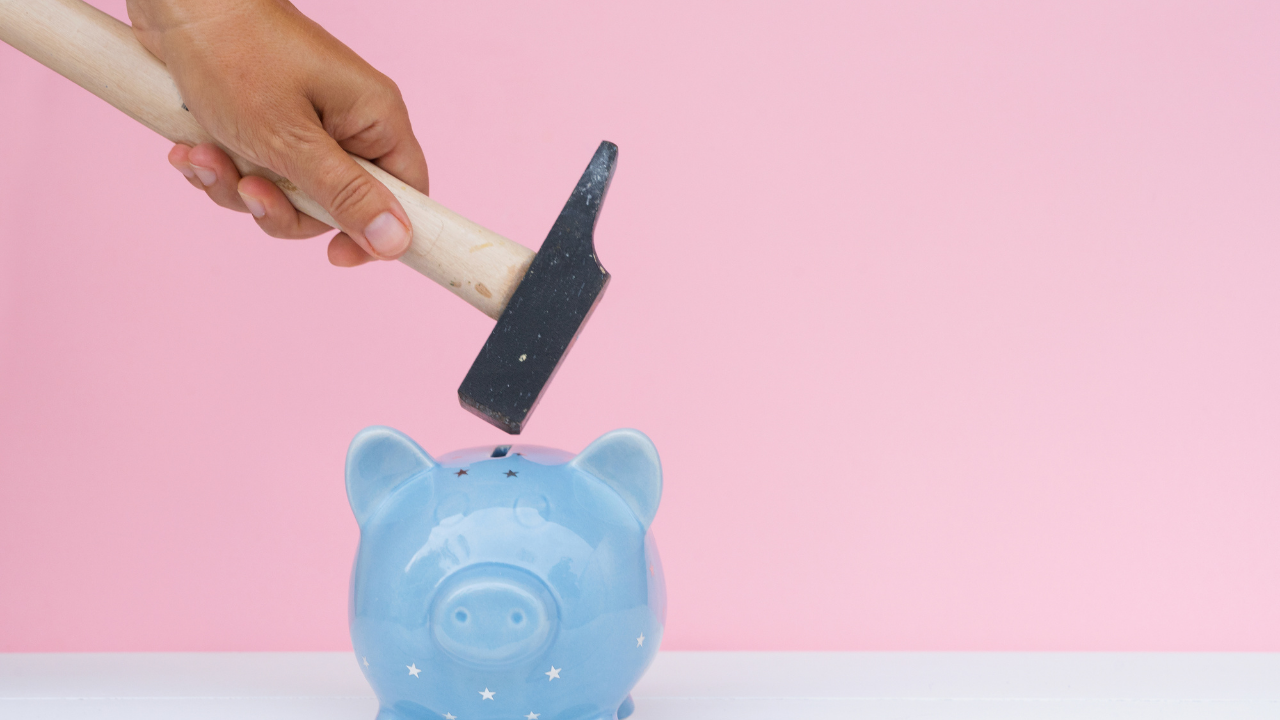Ok, ok. I know that sounds BORINGGGGGG. When I started my budget journey, my brain was like a toddler going completely limp when their mom says it’s time to leave a store. I gotta save money for something that may or may not happen?! And I can’t touch it? And I gotta save how much?! 😩
Absolutely no one likes thinking about the worst-case scenarios. Even when we do, we’re often paralyzed by fear and delay taking proactive action. As a lifelong Floridian, I am very familiar with how many people worry about hurricane season but delay getting their supplies until the shelves are bare at Publix.
The same is true for your finances.
Did you know that 40% of Americans are unable to cover a $400 cash emergency? (Don’t get me started on the structural systems that perpetuate that statistic.) I do not want you to be one of these people.
When the storms come along (and they will), I want you to be as cool and calm as the “This Is Fine” dog.

So let’s take a look at what an emergency fund is, what it does, and how to save for it.
“What is an emergency fund?”
An emergency fund is special savings that are used for (you guessed it) emergencies. What constitutes an emergency can vary from person to person, but the idea here is that it is 1) unexpected, and 2) urgent. This includes car or home repairs (that need to be immediately addressed), medical bills, or sudden loss of income.
“How much do I need to save?”
This is where I think a lot of people begin to panic and not take any action. The general guidance is 3-6 months of essential expenses, but the amount you need is going to depend on a few factors:
- What are the most likely “emergencies” you may experience? For instance, if your job is unstable, you might want enough to cover a job loss for a few months. But if you are more likely to experience issues with your car, you might want to be prepared for that situation.)
- Who is reliant on you? Single, childfree individuals may not need as much emergency savings as a couple with children. Remember, pets are reliant on you too!
- Do you have any big life changes coming up? If you are expecting to become a parent, buy a house, move in a year or two, or get married, it’s a good idea to beef up your emergency fund.
- How stable is your income? If your skills and abilities allow you to find work easily, you might not need to save as much as someone with more specialized skills in hard-to-employ industries.
“Oh my gawd, that is so much money.”
Take a deep breath. Three things I want you to keep in mind:
- Know your numbers. When we say “3-6 months of expenses”, we don’t mean the amount of money you are spending currently. We mean the amount of money you would need to spend if *ish* really hit the fan. If you lost your job and had no income, you wouldn’t be shopping for new shoes and ordering takeout – but you’d still need to house and feed yourself. Focus on the essential expenses number.
- It is not a race. Saving 3-6 months of expenses could mean thousands of dollars. You are not expected to save 3 months within 3 months! Put away what you can – even if it’s $20 a month. Just keep making the baby steps. It might take you 3 years to save 3 months of essential expenses.
- You are allowed to take breaks. An emergency fund does not need to be built all on one go. Break it into smaller parts. I think of it as walking upstairs – you save, save, save until you hit a milestone (say, $1000), then take a break. Focus on another goal. Then come back to it and save until you reach another milestone (say, 1 month of expenses).
“Where do I stash it?”
Emergency funds need a special combination of 1) easy to access, and 2) hard to be tempted by (particularly for those of us that are natural overspenders). I recommend to all of my coaching clients to save their emergency fund in a high yield savings account (HYSA). These accounts give you a little more in interest than a regular savings account, so your money is making money while it sits there. Nerd Wallet has a monthly roundup of the best HYSAs available.
The other benefit here is that you won’t see it when you check your regular bank account, and therefore won’t be able to spend from it easily. If you have to wait a day (or three) to transfer the cash, it’s a lot harder to justify using your emergency fund at Target for new clothes.
“Saving is HARD. How do I make it easier?”
Automate, automate, automate. If you hit payday and always forget to transfer money into savings, take yourself out of the equation.
Most employers that offer direct deposit for your paycheck will allow you to automatically deposit into more than one account. As for a new direct deposit form, and specify that you want a percentage (or dollar amount) of each paycheck to go into your emergency fund, and the rest to go into your checking account.
“Anything else?”
If you’ve come this far, know that I am so proud of you. The idea of saving for an emergency fund can feel overwhelming as scary at worst, and boring at best. I know you can do it! And if something unexpected comes your way, you can take a sigh of relief knowing it’s handled.

